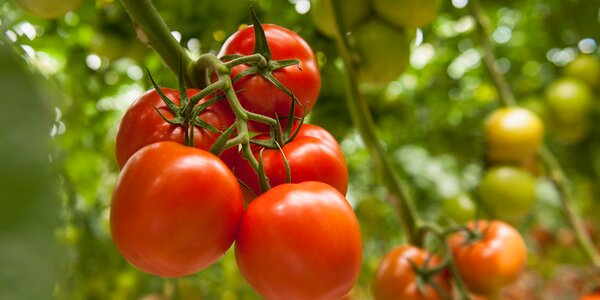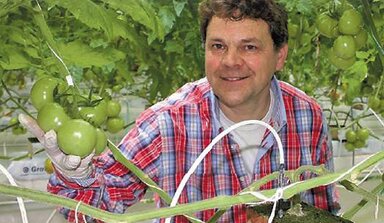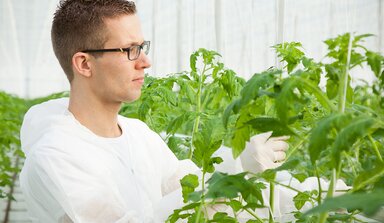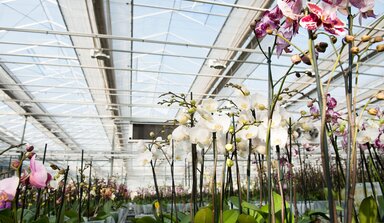Three years practical experience with ReduFuse
Coating makes optimal growing possible. Diffuse light clearly can increase production and quality. Over the years this has been proven time and time again by horticultural research trials and now data from commercial nurseries is piling up. ReduFuse allows a greenhouse roof to diffuse light without the need to rebuild or re-glaze. Three years of commercial experience have clarified how growers can best use the coating.
“ReduFuse produces a milder climate. You achieve a better setting, heavier fruits and you suffer fewer quality problems,” says Flip van der Most. “The coating is particularly suitable when the climate promotes generative growth, so when it is warm and dry.” He was the first person in the world to experience ReduFuse when he worked as a tomato production manager at Eurofresh Farms, in America in 2010. As a result he has the most practical experience. He now shares his know-how as a production advisor both in the Netherlands and abroad. “This coating yields the best results when you have a more generative crop; with this coating you can grow even more generatively than you are used to,” he says.
By April, a crop grown under artificial lights has been through a tough period. The increasing level of light around this time threatens to age the crop quickly, explains fellow advisor, Wim van Wingerden. “If you then apply ReduFuse, you achieve a milder climate that results in more leaf stretch and a better setting. You give the plant a second life and you maintain the quality. But even with a crop that isn’t lit, a coating can be useful around this time, certainly if the crop is looking somewhat poor or is generative.” With sweet peppers the coating primarily ensures a better quality in the summer, while maintaining production.

Flip van der Most
Cooler top
Diffuse light penetrates deeper into the crop than direct sunlight, so the lower leaves can also fully participate in assimilation. At the same time, the top of the plant remains cooler. Both aspects are an advantage: You have more assimilation and less stress. But because everyone has learnt to grow with direct radiation and therefore a warmer top, it does require adjustments to the cultivation strategy. “It doesn’t require any dramatic changes. You just have to keep reading the crop,” says van Wingerden, reassuringly. “And making adjustments based on plant temperature is very important,” adds Most. “The temperature at the top of the crop can be three to even five degrees cooler than in a greenhouse without a coating. You then have to prevent the plant becoming too cold by setting the ventilation temperature in the morning just a little higher than the boiler temperature and perhaps keeping the screens closed for a little longer. You have to anticipate it otherwise it can cost too much energy in the spring.”
When to apply
You need to pay attention to both the time of application, as well as its removal. The rule of thumb is: Apply in mid April and remove at the end of August. The threshold is around 1600 J/day radiation. “But it’s determined by the state of the crop. If the crop is still vigorous in the middle of April, or if the weather isn’t favourable, you’d better postpone it,” says van der Most.
The coating has to be removed sometime after the longest day and before it becomes too damp. Again you need some common sense. If it is still very hot in the middle of August that’s a signal to wait a bit longer. If the weather is warm and humid (= vegetative) you’ll probably want more direct sunlight in the greenhouse.
Both advisors say the main advantage of ReduFuse is an improvement in quality, while production, at very least, remains the same: Higher fruit weight; fewer green spots on vine tomatoes; less blossom end rot; heavier and better shaped peppers. “Growers who always push their crop hard or who have vegetative crops benefit less. The most success comes when using the coating with a more generative crop,” says van der Most. The disadvantages are the slight loss of light and therefore the need to steer more by maintaining heat at the beginning of the day and when there is too little light.
This is also the reason why there is a lot of discussion about the time of application. Once it’s applied, it’s there as well during a day with little radiation.
Overall the results are certainly positive; the advisors are pleased with the new possibilities. “In April and May you have to create your own climate. ReduFuse is a very good tool for this,” says van Wingerden. “And if it very hot and dry, it is extremely suitable for creating a mild climate in the greenhouse so that the crop is under less stress and can grow much better due to the good light penetration and better temperature distribution in the crop,” says van der Most.


